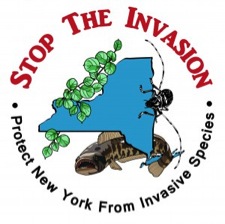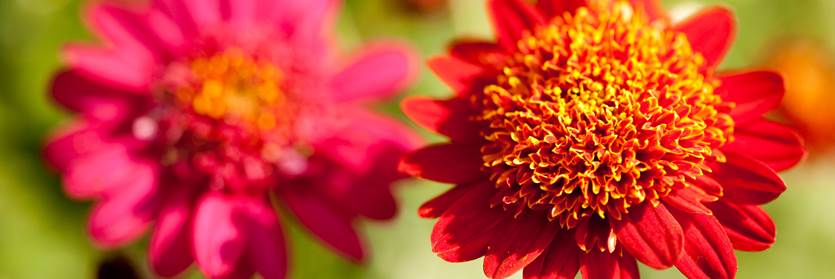Inside The New York Botanical Garden
invasive plant replacements
Posted in Gardening Tips on July 7 2014, by Jessica Schuler
By Jen Stengle (Cornell Cooperative Extension, Putnam County), Linda Rohleder (New York / New Jersey Trail Conference), and Jessica Schuler (NYBG).
 You might have noticed them crawling in your curtains, or buzzing around your house lamps; alarming numbers of brown marmorated stinks bugs settled down for winter this year. These alien invaders are just one of many invasive species that have taken hold in the Hudson Valley. Perhaps you have noticed Japanese stiltgrass (Microstegium vimineum) in a park or have seen viburnums eaten to shreds by Viburnum leaf beetle (Pyrrhalta viburni). These invasive plants and insects are just the ones we see. There are many others we don’t notice, clinging to the bottom of boats, hiding beneath the bark of trees, nestled in firewood, or attaching themselves to clothes or shoes—as in the case of seeds.
You might have noticed them crawling in your curtains, or buzzing around your house lamps; alarming numbers of brown marmorated stinks bugs settled down for winter this year. These alien invaders are just one of many invasive species that have taken hold in the Hudson Valley. Perhaps you have noticed Japanese stiltgrass (Microstegium vimineum) in a park or have seen viburnums eaten to shreds by Viburnum leaf beetle (Pyrrhalta viburni). These invasive plants and insects are just the ones we see. There are many others we don’t notice, clinging to the bottom of boats, hiding beneath the bark of trees, nestled in firewood, or attaching themselves to clothes or shoes—as in the case of seeds.
Read More
Posted in Gardening Tips on September 27 2010, by Sonia Uyterhoeven
 |
Sonia Uyterhoeven is Gardener for Public Education. Join her each weekend for home gardening demonstrations on a variety of topics in the Home Gardening Center. |
For the past two weeks I have written about the invasive Japanese stilt grass: describing it, exploring its life cycle, and giving tips on how to remove it.
Like most big problems, this annual grass will not go away easily. Repeated treatments are needed and the area needs to be maintained to discourage the plant’s growth. While this may sound daunting, it is reassuring to know that all you have to do is follow some simple and healthy gardening practices to slow down the return of stilt grass.
Most invasive plants are opportunists—colonizing areas that have been disturbed. So whenever you pull out any invasive plant, the first line of defense is to tamp down the disturbed soil (gently firming it with your feet).
If you are not replanting the area, the next course of action is to apply a thick layer of mulch over the surface. This will inhibit the germination of weed seeds uncovered in the soil disturbance and will provide a protective layer to prevent any introduced seeds from settling the area.
Read More
 You might have noticed them crawling in your curtains, or buzzing around your house lamps; alarming numbers of brown marmorated stinks bugs settled down for winter this year. These alien invaders are just one of many invasive species that have taken hold in the Hudson Valley. Perhaps you have noticed Japanese stiltgrass (Microstegium vimineum) in a park or have seen viburnums eaten to shreds by Viburnum leaf beetle (Pyrrhalta viburni). These invasive plants and insects are just the ones we see. There are many others we don’t notice, clinging to the bottom of boats, hiding beneath the bark of trees, nestled in firewood, or attaching themselves to clothes or shoes—as in the case of seeds.
You might have noticed them crawling in your curtains, or buzzing around your house lamps; alarming numbers of brown marmorated stinks bugs settled down for winter this year. These alien invaders are just one of many invasive species that have taken hold in the Hudson Valley. Perhaps you have noticed Japanese stiltgrass (Microstegium vimineum) in a park or have seen viburnums eaten to shreds by Viburnum leaf beetle (Pyrrhalta viburni). These invasive plants and insects are just the ones we see. There are many others we don’t notice, clinging to the bottom of boats, hiding beneath the bark of trees, nestled in firewood, or attaching themselves to clothes or shoes—as in the case of seeds.
